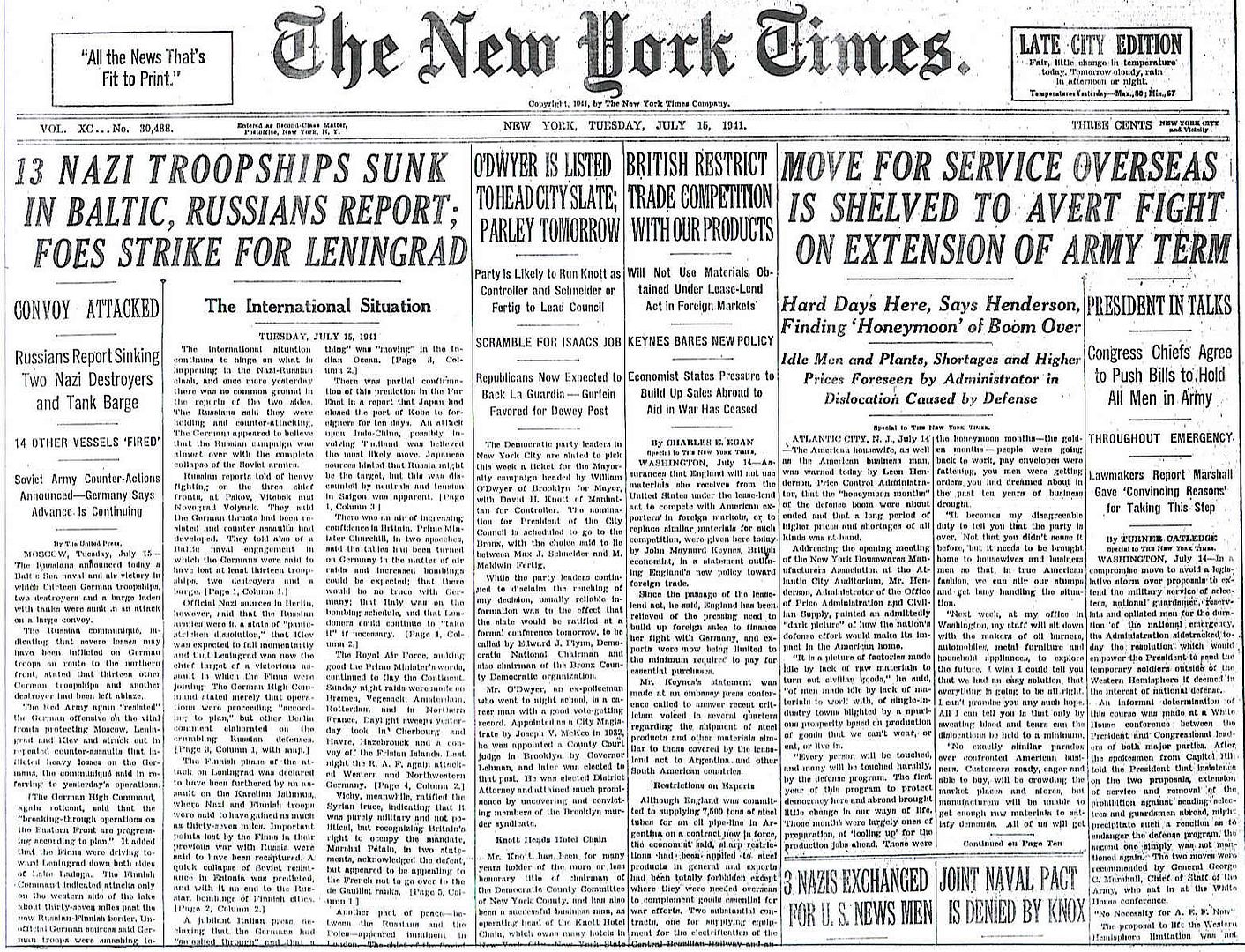
Posted on 07/15/2011 4:46:25 AM PDT by Homer_J_Simpson

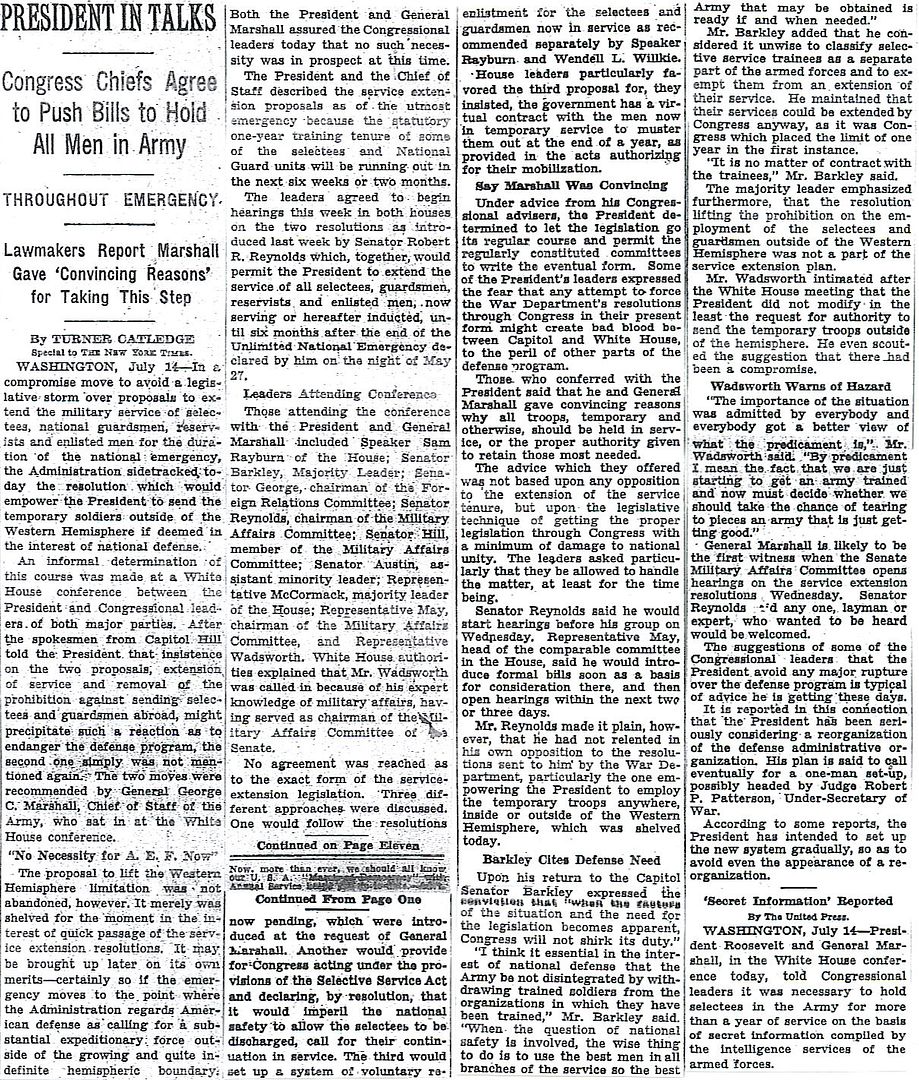
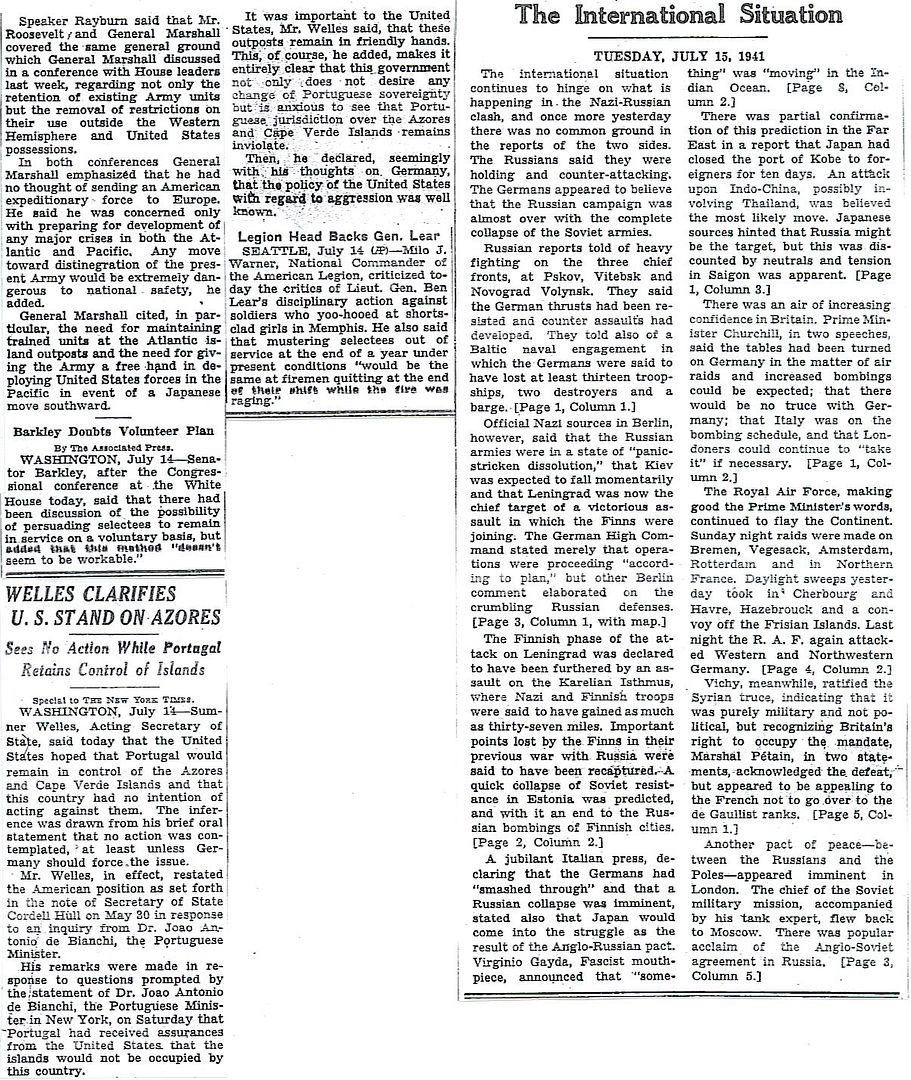
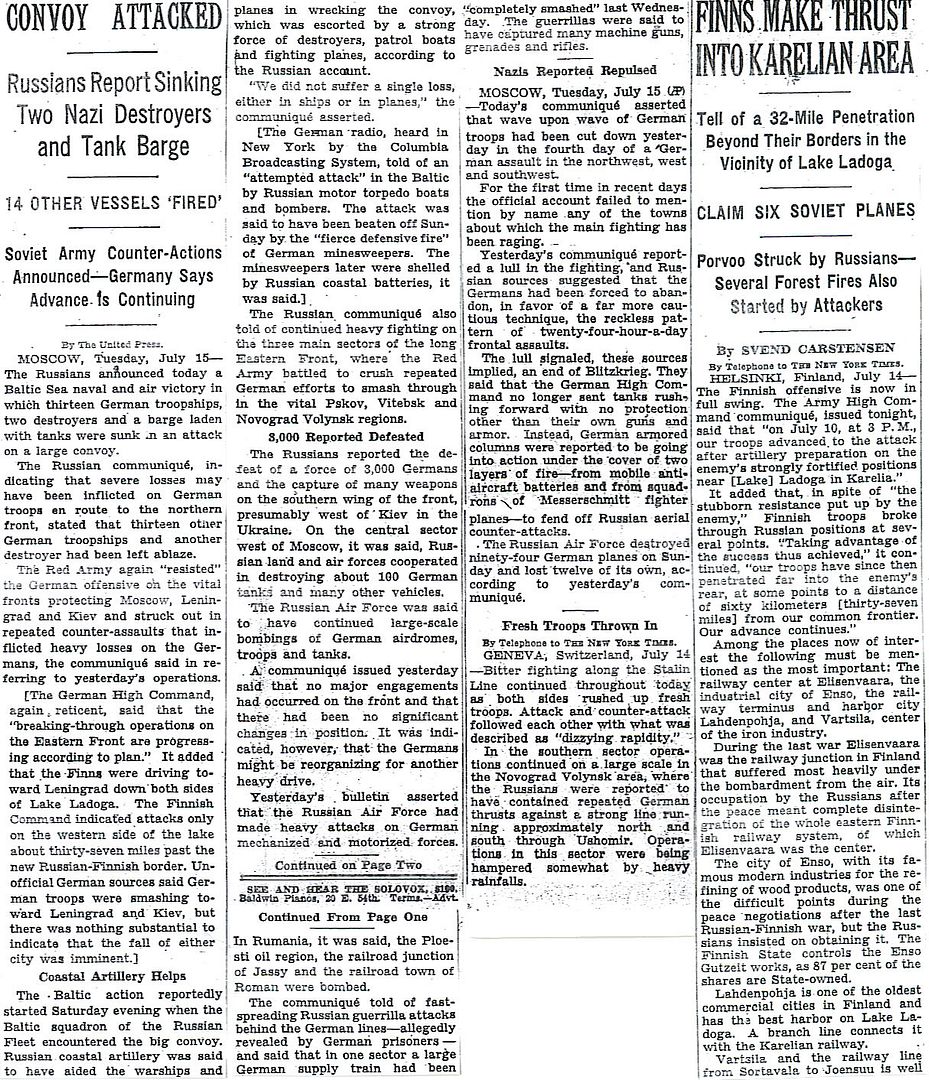
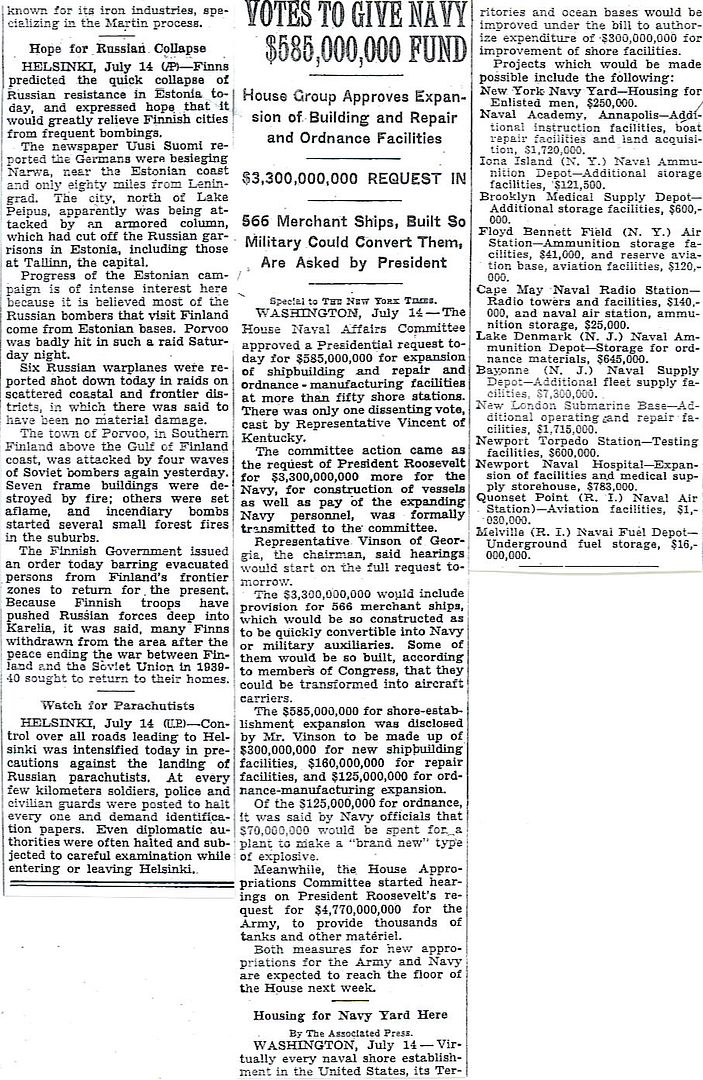

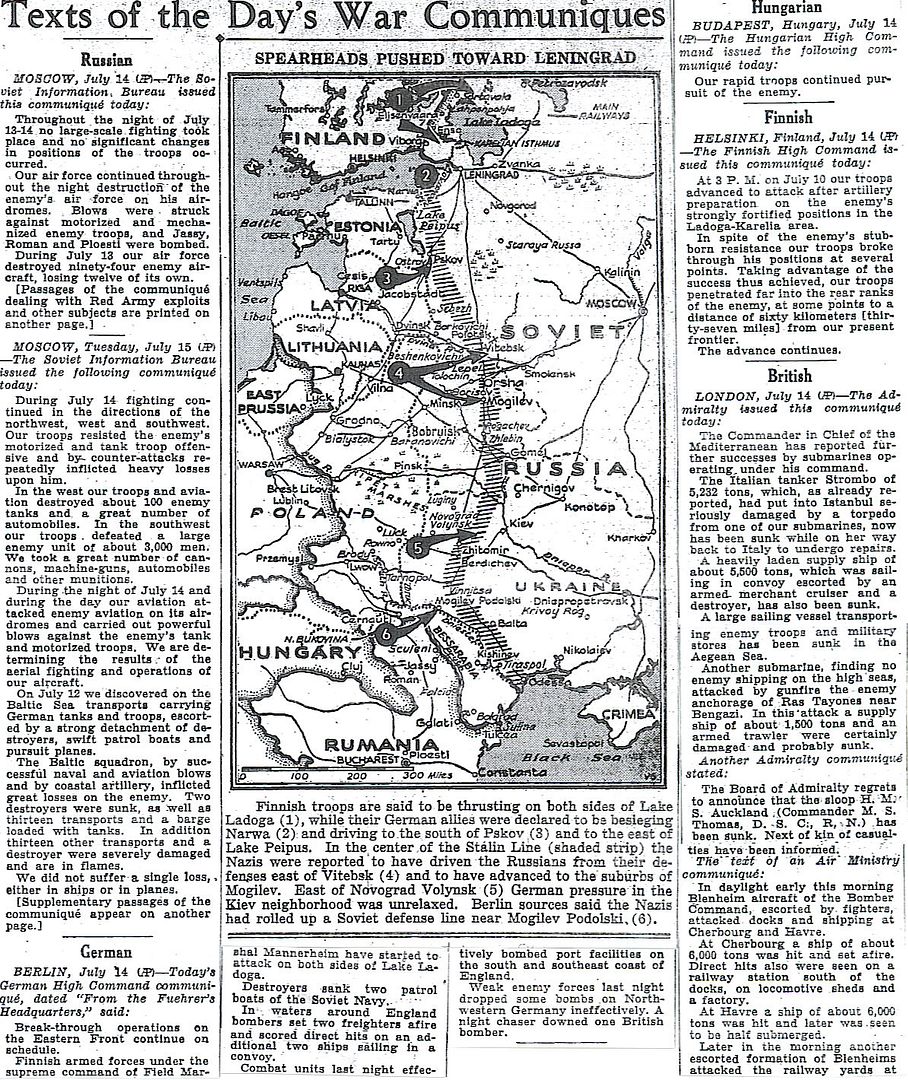
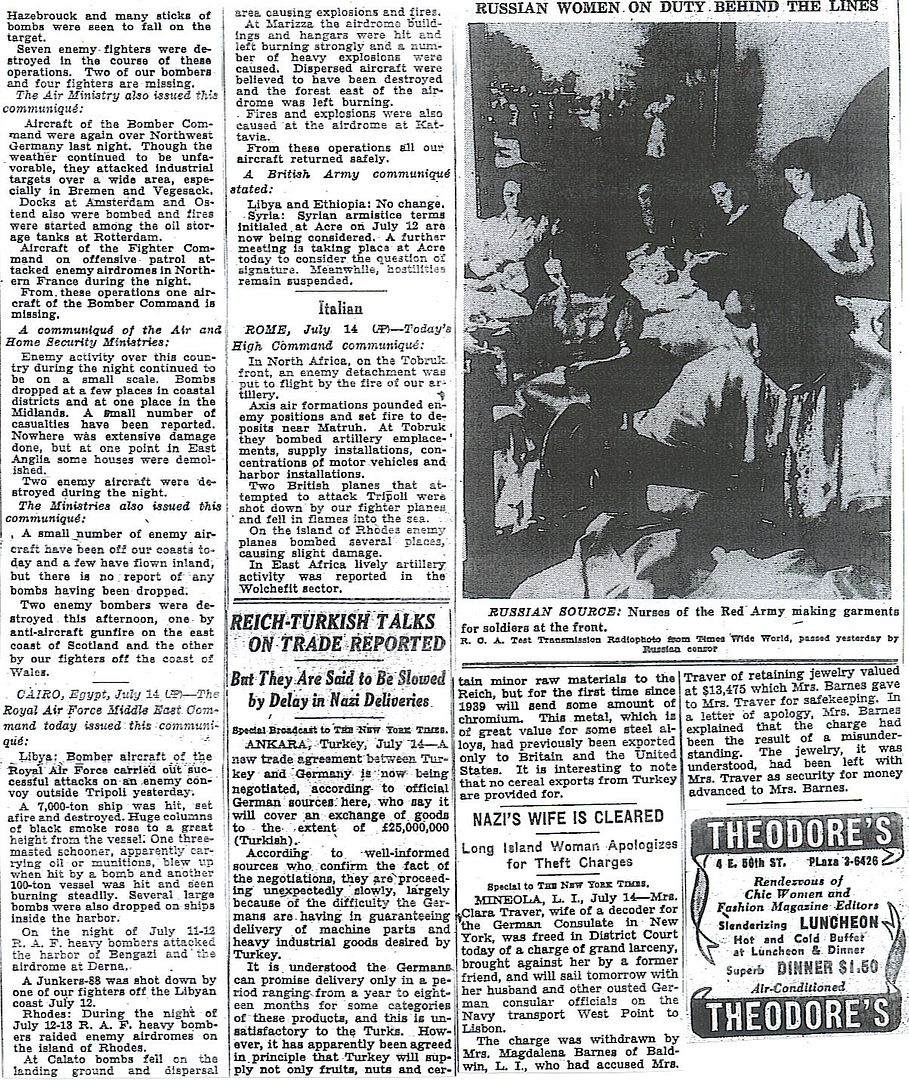
http://www.onwar.com/chrono/1941/jul41/f15jul41.htm
Red Army counterattack near Lake Ilmen
Tuesday, July 15, 1941 www.onwar.com
On the Eastern Front... The Soviets launch a counterattack (lasting until July 17th) in the Lake Ilmen area to gain time for the building of further fortifications around Leningrad. The attacking forces lose heavily in their efforts because the troops are very inexperienced.
http://homepage.ntlworld.com/andrew.etherington/month/thismonth/15.htm
July 15th, 1941
UNITED KINGDOM: Destroyer HMCS Huron laid down Vickers-Armstrong Ltd Newcastle-on-Tyne
GERMANY:
U-223, U-224, U-623, U-624 laid down.
U-507 launched. (Dave Shirlaw)
U.S.S.R.: The Red Army launches a counter-offensive near Leningrad. A Soviet counterattack begins today in the Lake Ilmen area. This will last for 3 days to gain time to build fortifications.
XXXXVII Pz.K’s 29 Inf. Div. (mot.) (GM Walter von Bolternstern) reach the southwestern suburbs of Smolensk. They attack at 4 AM this morning and control the city by night. (Jeff Chrisman)
FINLAND: Soviet commandos attack the Finnish island of Morgonland, capturing the Finnish observation party of five men. The prisoners are taken to camps in Kazakstan; only one survives the War. (Cris Wetton)
LEBANON: Beirut: The Allies have entered Beirut in triumph, and will hand over Syria and Lebanon to their inhabitants. When they invaded a month ago General de Gaulle said in a broadcast: “I come to end the mandatory regime and to proclaim you free and independent.” Thus Syria and Lebanon - to strong Vichy protests - join Eritrea in being offered self-determination.
COMMONWEALTH OF THE PHILIPPINES: All 3rd and 20th Pursuit Squadron pilots are certified on the P-35A. (Marc Small)
CANADA: Port operations craft ordered for RCN: HDPC 1, HDPC 2, HDPC 3, HDPC 4, HDPC 5, HDPC 6, HDPC 7, HDPC 8, HDPC 9, HDPC 10. (Dave Shirlaw)
NEWFOUNDLAND: The US sets up an air base at Argentia Bay. The two facilities established on this date were the U.S. Naval Air Station and the U.S. Naval Operating Base. (Jack McKillop)
U.S.A.: Baseball, the New York Yankees and Chicago White Sox play the final game of a three-game series at Comisky Park in Chicago, Illinois. Yankee center fielder Joe DiMaggio goes 2-for-4 against White Sox pitcher Eddie Smith and extends his hitting streak to 55 consecutive games. (Jack McKillop)
Aircraft carrier USS Lexington laid down.
AA cruiser USS Oakland laid down. (Dave Shirlaw)
Only at Mogilev, now far behind the German lines, did fierce fighting continue.
This regional center of the Belorussian Soviet Socialist Republic, a town on the upper Dnieper, with 100,000 inhabitants and a large railway repair-shop, the center of the West Russian silk industry and the ancient see of the Archbishop of all Catholics in the Russian Empire, was being stubbornly defended by three divisions of the Soviet Thirteenth Army, under Lieutenant-General Gerasimenko.
In General Yeremenko's memoirs we read the blunt statement:
The recapture ot Smolensk proved impossible. The High Command therefore decided at the end of July to order the Twentieth and Sixteenth Armies, which were encircled by Hoth's forces north of Smolensk, to break out of the pocket. The divisions of these Armies had by then been reduced to no more than 2000 men. The whole of Twentieth Army had only 65 tanks and nine aircraft left.
That was the measure of Hoth's triumph. Like Guderian south of the Smolensk-Moscow highway, Hoth had ordered his divisions to keep going. He had reached the Vop, where his now exhausted forces came up against the Stalin Line, which had been fortified in a surprisingly short period of time. With parts of his motorized forces and the infantry divisions which followed behind he put a ring around Yeremenko's 15 divisions which were to have retaken Smolensk.
Yeremenko resisted desperately. He had to fight without supplies and to hang on where he stood. The Soviet High Command was pinning him down with relentless orders. Commanders who retreated had to face courts martial. Soldiers who abandoned their positions were shot. The Soviet High Command was determined to recapture Smolensk at all costs. It was there that the German storm was to be broken. It was to become a dress-rehearsal for Stalingrad.
Moscow's determination was confirmed by the fact that, upon Stalin's personal command, a jealously guarded secret weapon was first employed here, although it was not yet in mass production and could not therefore be expected to play a decisive part. Yeremenko's account is most interesting on this point:
About mid-July I received a telephone message from headquarters: "It is intended to employ 'yeresa' in the battle against the fascists, A detachment armed with this new weapon will be assigned to you. Test the weapon and let us have your report on it."
'Yeresa' was the name for the first rocket-mortar batteries. Not even Yeremenko had known about them.
We tested the new weapon near Rudnya [Yeremenko reports]. The rockets streaked through the air with a terrifying whine. They, soared up like comets with a red tail and then exploded with a crash like thunder. The effect of the bursts of 320 rockets within a span of 26 seconds in a very limited area exceeded all expectations. The Germans ran away in panic and terror. Admittedly, our own troops withdrew likewise. For security reasons we had not informed them beforehand about the use of the new weapon.
The victims of this surprise were parts of Hoth's 12th Panzer Division. At first the effect on the troops was really terrifying. The German troops nicknamed the rocket mortar "Stalin's organ-pipes." The Russians called it "Katyusha"— Little Kate. Luckily, Yeremenko had only one unit. Thus the appearance of the howling Katyusha at Rudnya did not turn the tide of the battle, but it was another reminder of the technological capacity of the Soviets. It convinced the optimists in the German High Command of the need for caution --or, to put it differently, for haste.
Germans, far behind the front-lines, argue with Soviet pows outside the town of Orsha.
German assault engineers prepare to cross small river east of Smolensk-July 1941
Guard duty in Minsk
Unnamed German unit after a battle. Russian armored cars and truck mounted Soviet infantry attacked this unit from the hills in the distance. Western Ukraine in late July.
Same unit. Attack is to their front but too far away to reply
Russian deserters-July 41
German supply corp drivers watch Soviet pows heading west.
Undated photo with no description
In that last photo, what is that thing in the middle of the graves? A buried piece of machinery?
I’ve been without internet access for the last couple of days. This was well worth the wait. Glad I checked back on the last thread I could post on.
It's hard to tell although I can see what looks like a few shells on the grave.
Disclaimer: Opinions posted on Free Republic are those of the individual posters and do not necessarily represent the opinion of Free Republic or its management. All materials posted herein are protected by copyright law and the exemption for fair use of copyrighted works.